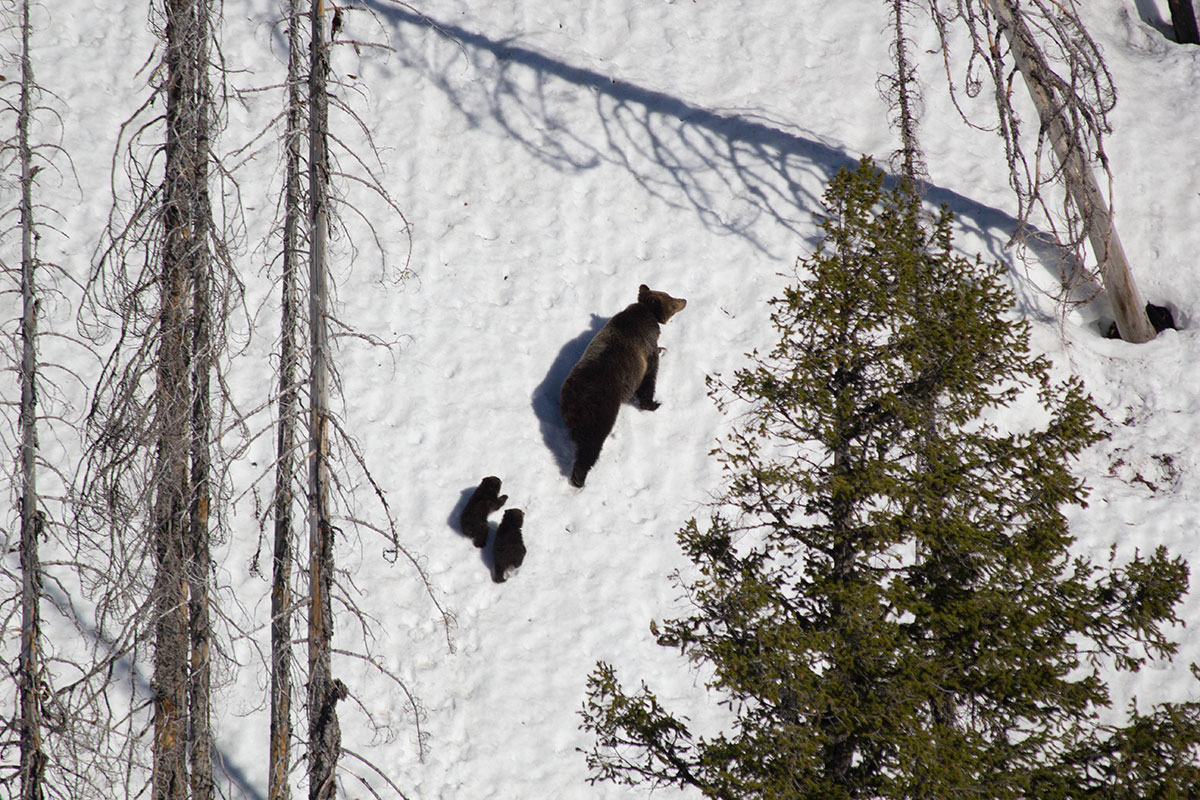Bears Emerging from Hibernation in Northwest Montana
Residents are encouraged to secure food attractants as bears leave their dens and begin making forays into lower elevations in the Flathead Valley in search of food
By Tristan Scott
With the arrival of spring, bears are beginning to emerge from their mountain dens and descend into the valleys in search of food, prompting wildlife officials to issue their perennial reminder for residents to be bear aware to reduce conflicts.
As local black bears and grizzlies begin to stir in the Flathead Valley, wildlife managers anticipate an uptick in reports of bear sightings and conflicts with humans, a problem that can be dramatically reduced if residents remember to lock up or secure pet food, birdseed, trash, smaller livestock, and other food attractants.
As of April 3, reports of bear sightings and minor conflicts have started have started “trickling in” across the Flathead Valley, according to officials with Montana Fish, Wildlife and Parks (FWP). Although the sightings have primarily involved black bears, wildlife managers say a radio-collared male grizzly bear near Swan Lake is on the move, while tracks spotted in the snows of Glacier National Park and the Whitefish Trail indicate that bears are venturing out in search of food.
“Bears become more active in April and May, and now is a good time for residents to assess their property and remove any unsecured food attractants,” said Justine Vallieres, FWP regional wildlife conflict specialist. “The best way to avoid having a bear on your property is to secure or remove attractants.”
Bears gain confidence with each incremental learning experience in which they receive a positive food reward, and Vallieres urged residents to take steps to avoid conflicts by reducing attractants.
Vallieres also encouraged anyone recreating on trail systems to carry bear spray.
“Bear spray works for everything — bears, lions, an angry moose,” she said. “It should be an essential item for recreating in bear country.”
There are more than 1,000 grizzly bears in the Northern Continental Divide Ecosystem, an area encompassing the Flathead and Swan valleys. It’s the largest population of grizzlies in the lower 48 states.

To promote education and outreach, FWP staff in the Flathead Valley will be presenting on bear safety and management at a few upcoming events:
On April 5, Whitefish Legacy Partners is hosting a “Bear Aware” presentation at 6:30 p.m. at Alpine Theatre Project Studios, 6475 Highway 93 South, in Whitefish. To register for this free event, visit https://www.whitefishlegacy.org.
Also on April 5, Swan Valley Connections is hosting a “Spring Bear Wake-up Social Community Potluck and Presentation” with FWP staff who will share updates on bears in the area. The event starts at 5:30 p.m. at the Swan Valley Community Hall. The event will be livestreamed online, and more information is available at https://www.swanvalleyconnections.org/.
Whitefish Legacy Partners is hosting a second event in Kalispell on April 20 at 6:30 p.m. at Bias Brewing, 412 South Main Street. To register for this free event, visit https://www.whitefishlegacy.org.
FWP reminds residents and recreationists that Montana is “Bear Country” with populations of grizzly bears and black bears. All bears are potentially dangerous. The majority of human-bear conflicts involve bears protecting their young or a food source. The overwhelming majority of bear encounters do not involve conflict.
In Whitefish, residents are reminded of the new city ordinance that seeks to reduce conflicts with bears. Last year the Whitefish City Council adopted a citywide ordinance requiring bear-resistant garbage containers at all residential properties in city limits. To operate properly, these garbage containers must be fully latched and cannot have overflowing garbage. For more information, contact the city of Whitefish at (406) 863-2400.
Residents should report bear encounters and conflicts immediately to FWP or a tribal wildlife management agency. In northwest Montana, those contacts are:
- Northern portion of Flathead County and Eureka area – Justine Vallieres, (406) 250-1265
- Southern portion of Flathead County – Erik Wenum, (406) 250-0062
- Cabinet-Yaak ecosystem and Sanders County – Kim Annis, (406) 291-1320
- Flathead Indian Reservation – Confederated Salish and Kootenai Tribes Wildlife Management Program, (406) 275-277
For more information on bear safety, visit https://fwp.mt.gov/conservation/wildlife-management/bear.